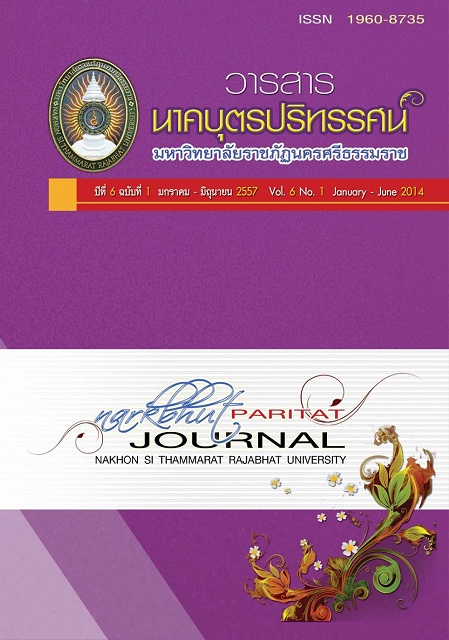เทคนิคการสังเกตสำหรับการวิจัยและพัฒนา
Main Article Content
Abstract
การเก็บรวบรวมข้อมูล เพื่อตอบคำถามที่อยากรู้หรือตอบโจทย์การวิจัย โดยใช้วิธีการสังเกตถือว่ามีความเหมาะสมและนิยมใช้กันอย่างแพร่หลาย การเลือกระดับและวิธีการของการสังเกต ขึ้นอยู่กับความลึกซึ้งของข้อมูลที่ต้องการ กล่าวคือ ระดับการสังเกตประกอบด้วย การสังเกตระดับ 1 (การสังเกตทั่วไป 45-90 องศา) เพื่อให้เห็นว่าคืออะไร เป็นอะไร การสังเกตระดับ 2 (การสังเกต 180 องศา) เป็นการสังเกตที่ต้องการรายละเอียดของข้อมูลมากขึ้น ต้องอาศัยกระบวนการศึกษาจากฐานความคิดเชิงระบบ การสังเกตระดับ 3 (การสังเกต 270 องศา) จะช่วยให้ได้ข้อมูลเชิงประจักษ์มากขึ้น และการสังเกตระดับ 4 (การสังเกต 360 องศา) เพื่อการวิจัยและพัฒนา เป็นการตรวจสอบเชิงลึกมากขึ้นใช้หลักการ แนวคิด ทฤษฎีและการสืบค้นที่รัดกุมส่วนวิธีการสังเกตประกอบด้วย การสังเกตแบบมีส่วนร่วมและการสังเกตแบบไม่มีส่วนร่วม โดยผู้สังเกตต้องมีทักษะเกี่ยวกับการสังเกต มีการกำหนดโครงสร้างการสังเกต มีการสังเกตซ้ำเพื่อให้ได้ข้อมูลเพียงพอและมีการจดบันทึกข้อมูลการสังเกต เพื่อนำไปวิเคราะห์ สังเคราะห์ และลงข้อสรุป เพื่อนำข้อสรุปดังกล่าว ไปประยุกต์ใช้หรือสร้างสรรค์นวัตกรรมต่อไป
Observation Technique for Research and Development
Data Collection to answer that question, I know the answer to the research. Using observations Deemed appropriate and most widely used.Selecting and methods of observation. Depending on the depth of information that is required to observe the day. Observation level 1 (general observation 45-90 degrees), so that is what was observed at 2 (observation 180 degrees) the observation that want more detailed information. Require more study of systems thinking. Observation level 3 (observation 270 degrees) gives a more empirical data. And observation of 4 (observation 360 degrees for research and development. A more in-depth examination of the principles, concepts, theories, and searched the transaction. The method consists of Observation, participatory and non-participatory observation. The observation skills are required to observe. Be defined observation Has been observed repeatedly in order to get enough information and data are recorded observations. In order to analyze, synthesize, and the conclusion to such a conclusion. To apply or to innovate


